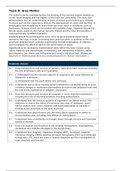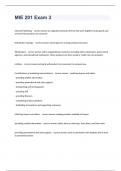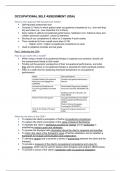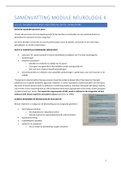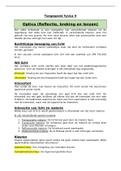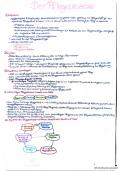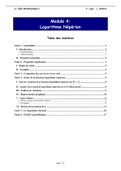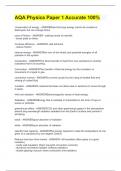The scene is set by considering how the working of the nervous system enables us
to see. Brain imaging and the regions of the brain are considered. The topic also
demonstrates how an understanding of brain structure and functioning is relevant
to issues such as the response to stimuli, the development of vision and learning. It
investigates how imbalances in brain chemicals may result in conditions such as
Parkinson’s disease, which can be treated with suitable drugs. Students discuss the
ethical issues raised by the Human Genome Project and the risks and benefits of
using genetically modified organisms.
Students should be encouraged to carry out a range of practical experiments
related to this topic in order to develop their practical skills. In addition to the core
practicals detailed below, possible experiments include investigation of reflexes,
and investigate the effect of light on the germination of seeds.
Opportunities for developing mathematical skills within this topic include using
ratios, fractions and percentages, constructing and interpreting frequency tables
and diagrams, bar charts and histograms and using a statistical test. (Please see
Appendix 6: Mathematical skills and exemplifications for further information.)
Students should:
8.1 Know the structure and function of sensory, relay and motor neurones including
the role of Schwann cells and myelination.
8.2 i) Understand how the nervous systems of organisms can cause effectors to
respond to a stimulus.
ii) Understand how the pupil dilates and contracts.
8.3 Understand how a nerve impulse (action potential) is conducted along an axon
including changes in membrane permeability to sodium and potassium ions and
the role of the myelination in saltatory conduction.
8.4 Know the structure and function of synapses in nerve impulse transmission,
including the role of neurotransmitters, including acetylcholine.
8.5 Understand how the nervous systems of organisms can detect stimuli with
reference to rods in the retina of mammals, the roles of rhodopsin, opsin,
retinal, sodium ions, cation channels and hyperpolarisation of rod cells in
forming action potentials in the optic neurones.
8.6 Understand how phytochrome and IAA bring about responses in plants to
environmental cues, including their effects on transcription.
8.7 Understand how co-ordination is brought about through nervous and hormonal
control in animals.
8.8 Know the location and functions of the cerebral hemispheres, hypothalamus,
cerebellum and medulla oblongata in the human brain.
8.9 Understand how magnetic resonance imaging (MRI), functional magnetic
resonance imaging (fMRI), positron emission tomography (PET) and computed
tomography (CT) scans are used in medical diagnosis and the investigation of
brain structure and function.
24 Pearson Edexcel Level 3 Advanced GCE in Biology A (Salters-Nuffield)
Specification – Issue 3 – July 2016 © Pearson Education Limited 2016
,Students should:
8.10 Understand what happens during the critical period so that mammals can
develop their visual capacities to the full.
8.11 Understand the role animal models have played in the research into human
brain development and function, including Hubel and Wiesel’s experiments with
monkeys and kittens.
8.12 Be able to discuss moral and ethical issues relating to the use of animals in
medical research from two ethical standpoints.
8.13 Understand how animals, including humans, can learn by habituation.
CORE PRACTICAL 18:
Investigate habituation to a stimulus.
8.14 Understand how imbalances in certain, naturally occurring brain chemicals can
contribute to ill health, including dopamine in Parkinson’s disease and serotonin
in depression, and to the development of new drugs.
8.15 Understand the effects of drugs on synaptic transmissions, including the use of
L-Dopa in the treatment of Parkinson’s disease and the action of MDMA in
Ecstasy.
8.16 Understand how the outcomes of genome sequencing projects are being used
in the development of personalised medicine and the social, moral and ethical
issues this raises.
8.17 Know how drugs can be produced using genetically modified organisms (plants,
animals and microorganisms).
8.18 Understand the risks and benefits associated with the use of genetically
modified organisms.
8.19 Understand the methods used to investigate the contributions of nature and
nurture to brain development, including evidence from the abilities of new-born
babies, animal experiments, studies of individuals with damaged brain areas,
twin studies and cross-cultural studies.
Pearson Edexcel Level 3 Advanced GCE in Biology A (Salters-Nuffield) 25
Specification – Issue 3 – July 2016 © Pearson Education Limited 2016
, Topic Eight Biology
8.1 – Structure & Function of Sensory, Relay and Motor Neurones including Role of Schwann Cells and Myelination
1. The nervous system is made of neurones
2. All neurones have a cell body with a nucleus and all other cell organelles
3. The cell body has extensions that connect to other neurones – dendrites and dendrons carry nerve impulses
towards the cell body, and axons carry nerve impulses away from the cell body
4. The 3 different types of neurones have slightly different structures and functions
• Neuron = a single cell
• Nerve = complex structure containing a bundle of axons of many
neutrons surrounded by protective covering
Myelination - there is a fatty insulating layer called myelin sheath
around the axon made of Schwann cells wrapped around the
axon. The sheath affects speed of nerve impulses


